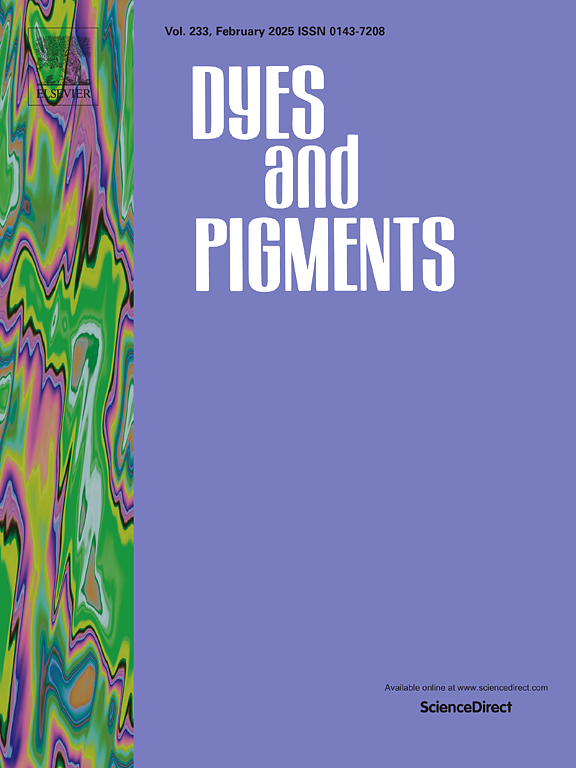Concentration dependence of the adsorption of metalfree tetra(4-carboxyphenyl) porphyrin (TCPP) on hexagonal boron nitride
IF 4.1
3区 工程技术
Q2 CHEMISTRY, APPLIED
引用次数: 0
Abstract
The adsorption and self-assembly of metalfree tetra(4-carboxyphenyl) porphyrin (TCPP) from ethanol on the surface of hexagonal boron nitride (hBN) was studied to determine the influence of the concentration of the solution on the self-assembly/aggregation and spectroscopic properties of the adsorbed TCPP. The adsorption isotherm indicates that at saturation the TCPP molecules adsorb edge-on with the macrocycle nearly perpendicular parallel to the hBN surface. On the other hand, the atomic force (microscopy AFM) micrographs indicate that a monolayer of flat-on adsorbed TCPP molecules, observed for adsorption from a diluted solution transforms into edge-on adsorbed molecules when more concentrated solutions are used. While for adsorption from a dilute solution, the stationary emission spectra correspond to those reported in literature, they shift 15 nm to longer wavelengths when adsorption occurs from more concentrated solutions suggesting stronger interaction between neighboring chromophores for edge on adsorption. The latter is also suggested by a broadening of the red edge of the fluorescence excitation spectra. Fluorescence decays obtained for the different emission wavelengths can be analyzed globally as quadruple exponential decays linking the four decay times. The non-mono-exponential character of the decay is attributed mainly to energy transfer to non-fluorescent traps. The longest decay time decreases from 5.9 ns for the sample prepared by adsorption from a dilute solution to 4.6 and 4.0 ns from samples prepared from more concentrated solutions. These decay times are about 50 % shorter than the fluorescence decay time of TCPP in ethanol.

求助全文
约1分钟内获得全文
求助全文
来源期刊

Dyes and Pigments
工程技术-材料科学:纺织
CiteScore
8.20
自引率
13.30%
发文量
933
审稿时长
33 days
期刊介绍:
Dyes and Pigments covers the scientific and technical aspects of the chemistry and physics of dyes, pigments and their intermediates. Emphasis is placed on the properties of the colouring matters themselves rather than on their applications or the system in which they may be applied.
Thus the journal accepts research and review papers on the synthesis of dyes, pigments and intermediates, their physical or chemical properties, e.g. spectroscopic, surface, solution or solid state characteristics, the physical aspects of their preparation, e.g. precipitation, nucleation and growth, crystal formation, liquid crystalline characteristics, their photochemical, ecological or biological properties and the relationship between colour and chemical constitution. However, papers are considered which deal with the more fundamental aspects of colourant application and of the interactions of colourants with substrates or media.
The journal will interest a wide variety of workers in a range of disciplines whose work involves dyes, pigments and their intermediates, and provides a platform for investigators with common interests but diverse fields of activity such as cosmetics, reprographics, dye and pigment synthesis, medical research, polymers, etc.
 求助内容:
求助内容: 应助结果提醒方式:
应助结果提醒方式:


